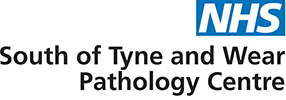Sicklecell Screen
Code:
SIC
Sample Type:
Purple top tube recommended but heparinised (Green top tube) may be used.
Ref Ranges/Units:
A negative result is indicative no sickle haemoglobin (HbS) present. A positive result indicates sickle haemoglobin is present but it does not differentiate between Sickle Cell Disease (homozygous S/S) and sickle trait (Heterozygous A/S). Capillary electrophoresis should be used in conjunction with the sickle cell solubility test both as a confirmation technique and for haemoglobin quantitation.
Turnaround:
< 24 hours
Special Precautions/Comments:
Additional Information:
1. False positives may occur in patients with erythrocytosis, hyperglobulinaemia, extreme leukocytosis or hyperlipidaemia. Coarse flocculation may occur in these samples due to elevated levels of total serum protein. These patient samples may be washed in normal physiologic saline, centrifuged and 10 μl of the packed cells used for testing.
2. False positives or false negatives may occur in patients with severe anaemia (≤15% hematocrit).
3. False negatives may occur in infants under six months of age due to elevated levels of Haemoglobin F.
4. False positives or false negatives may occur in patients with a recent blood transfusion.
5. Positive results may occur in patients with some rare sickling haemoglobin subtypes such as Haemoglobin C Harlem or Haemoglobin C Georgetown.
6. The SICKLEDEX test is a qualitative screening procedure and does not differentiate between Sickle Cell Disease (S/S) and Sickle Cell Trait (A/S). All positive test results should be further evaluated by capillary electrophoresis, when used for patient testing.
1. False positives may occur in patients with erythrocytosis, hyperglobulinaemia, extreme leukocytosis or hyperlipidaemia. Coarse flocculation may occur in these samples due to elevated levels of total serum protein. These patient samples may be washed in normal physiologic saline, centrifuged and 10 μl of the packed cells used for testing.
2. False positives or false negatives may occur in patients with severe anaemia (≤15% hematocrit).
3. False negatives may occur in infants under six months of age due to elevated levels of Haemoglobin F.
4. False positives or false negatives may occur in patients with a recent blood transfusion.
5. Positive results may occur in patients with some rare sickling haemoglobin subtypes such as Haemoglobin C Harlem or Haemoglobin C Georgetown.
6. The SICKLEDEX test is a qualitative screening procedure and does not differentiate between Sickle Cell Disease (S/S) and Sickle Cell Trait (A/S). All positive test results should be further evaluated by capillary electrophoresis, when used for patient testing.
1. False positives may occur in patients with erythrocytosis, hyperglobulinaemia, extreme leukocytosis or hyperlipidaemia. Coarse flocculation may occur in these samples due to elevated levels of total serum protein. These patient samples may be washed in normal physiologic saline, centrifuged and 10 μl of the packed cells used for testing.
2. False positives or false negatives may occur in patients with severe anaemia (≤15% hematocrit).
3. False negatives may occur in infants under six months of age due to elevated levels of Haemoglobin F.
4. False positives or false negatives may occur in patients with a recent blood transfusion.
5. Positive results may occur in patients with some rare sickling haemoglobin subtypes such as Haemoglobin C Harlem or Haemoglobin C Georgetown.
6. The SICKLEDEX test is a qualitative screening procedure and does not differentiate between Sickle Cell Disease (S/S) and Sickle Cell Trait (A/S). All positive test results should be further evaluated by capillary electrophoresis, when used for patient testing.


